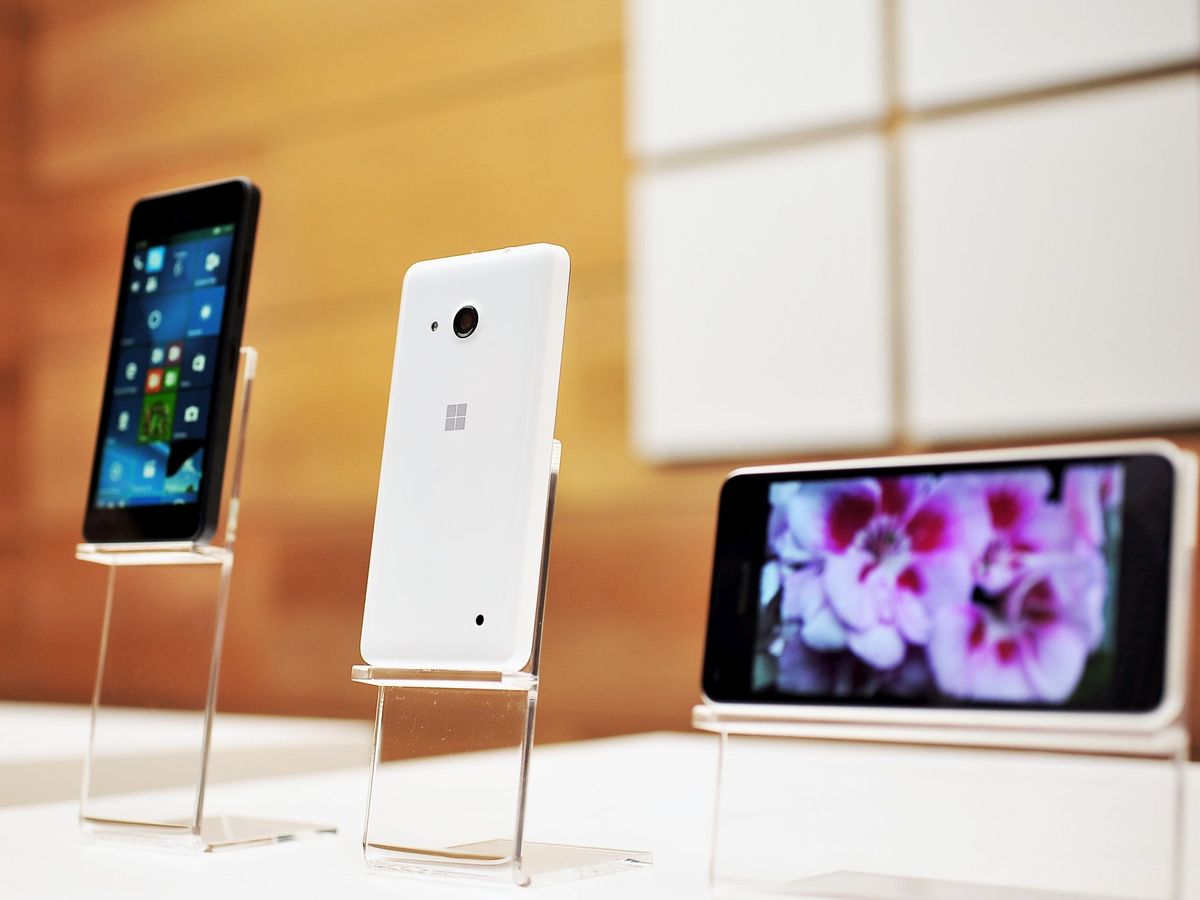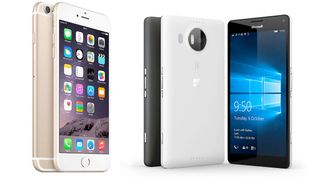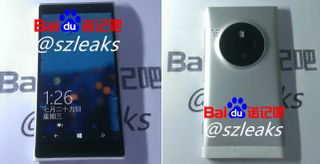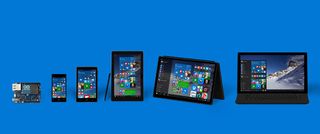Live Photos, 3D Touch & Universal Apps: Apple hijacks Microsoft's lingo
Perception matters. Particularly in marketing. Most people would agree that marketing has far more to do with perception than with reality.

Consequently, companies work diligently to present their products and services in a fashion that ensures that what they are selling is perceived as superior to what their competitors are offering.
Rarely in history, however, does a company leapfrog significantly ahead of competitors in a given area legitimizing a lasting claim to superiority.
As such, we are often left with a battle of words over similar product offerings as competitors wrestle for the minds of consumers. Some companies are better at this than others.
3D Touch, Living Images and universal apps, for example, are familiar terms to many Microsoft fans. Apple, however, has positioned itself to wrest those terms from Redmond as they market their flavor of similar technologies.

Again, as most people know, marketing has far more to do with perception than with reality. It is often the better marketer that wins the day.
Flashback
I'd first like you to propel your memory over the mountain of excitement Microsoft produced on October 6, 2015, and land ever so briefly upon the September 9, 2015, event of that other tech company. Recall, if you will, how Apple, with apparent systematic intent, seemed to usurp those three terms that Microsoft has used to describe features (and potential features) within its ecosystem of products?
- 3D Touch is being used by Apple to describe on the iPhone, what is called Force Touch, when the same underlying technology is applied to Apple Watch. Of course, the term 3D Touch brings astute Microsoft enthusiasts minds back to the (canceled) McClaren, which boasted true three-dimensional interaction.
- Live Photos, which automatically provides users a "gif-like" image of any photo looks very much like Microsoft's Living Images.
- Apple applied the term Universal Apps to apps that run across just two (iOS and tvOS) of the several operating systems the Cupertino company maintains. Of course universal apps as part of Microsoft's Universal Windows Platform will run on all devices and are, therefore, well, universal.

It's all in the mind
Names matter. The frequent litigation we have seen as firms battle over product or services names is proof of this statement. To be clear, I'm not claiming that Apple's use of the aforementioned terms is a legal matter. I'm looking, rather, at how the extent to which companies go to protect a name validates the psychology of it all.
Get the Windows Central Newsletter
All the latest news, reviews, and guides for Windows and Xbox diehards.
Firms spend millions of dollars on market research in an attempt to discover what appeals to the mind of consumers.
You see, when all is said and done, fancy specs and features don't ultimately sell a product. It's the message surrounding a product and how it is presented to and received by the human mind that essentially entices us.
The company that can occupy a certain place in the mind of a consumer wins the day.
The name of a product, feature or service is key to its taking root in the mind and having preeminence over similar offerings from rival companies. Thus, whichever company has the better message, not necessarily the better product, usually wins the coveted position in the minds of consumers.
Furthermore, whichever company has the more powerful brand name usually has the more effective message.
What's in a name?
"What's in a name? That which we call a rose by any other name would smell as sweet."
This line by Juliet from Shakespeare's timeless tale was the maiden's assertion that Romeo's family name was, despite the feud between their families, irrelevant to her.
Most members of each family, without deeper contemplation, simply followed the status quo. The standard set by an established behavior of categorizing members of the rival family based on their name simplified how each family evaluated the members of the other. (Stick with me.)
There was no intellectual effort required to delve deeper into understanding an individual. No patience needed to hear the rational arguments from the opposing side. For the Capulets and Montagues, an efficient system of limited critical thinking provided a simplified means to keep each member of the families thinking the way the majority wanted them to think. There was power in the names.
There's power in a name
You see, sometimes powerful names are leveraged to control human behavior. In Romeo and Juliet, the unwary members of the rival families were easily moved by the will of the majority. Powerful brands have a similar influence on consumer behavior today.
Some brands are so powerful that they influence the establishing of an efficient system of limited critical thinking in the minds of consumers. Such a level of devotion is elicited from these fans that they have no motivation to delve deeper into the messages from the firm to which they are devoted. Nor are they open to entertaining the arguments of rival firms. They simply follow the status quo. They trust the brand. Thus, any message emanating from a firm in such a position has a profound market influence.
Apple is clearly one of the most powerful brands on earth. With the event-like status of its product announcements and the firms undeniable influence in the media, Cupertino's ability to influence consumer behavior is undeniable.
It is against this level of marketing prowess that Microsoft finds itself positioned. Redmond is in the precarious position of trying to retain its grasp on terms that Apple wants the industry to associate with its products.

Lock in
Once we know the name of something our minds begin to place it into a category. This categorization is where things begin to lock into a particular place in our thoughts. Once locked into that place any information that contradicts that established position is often rejected without much thought.
This "lock-in" status is the position every company wants its offerings to occupy in a consumer's mind. They want a feature or product name so intricately associated with their company that similar names of similar (or superior) technology are rejected by consumers with little thought.
For this reason, I believe Apple, with clear intent, seized upon the names 3D Touch, Live Photos and universal apps during their globally publicized "Hey Siri" event. Cupertino wants consumers, developers and the industry at large to think, "Apple," when they hear these and similar terms despite previous or potentially superior offerings by rivals.
3D Touch so close, yet so far away
Microsoft's highly anticipated McClaren, which boasted 3D Touch and an exploding tile, mix-view interface was slated for the Fall of 2014 before its untimely cancelation. Unlike Apple's apparent "play on words" implementation of 3D Touch, Microsoft's vision for actual 3D Touch is "Hololens" ambitious. Microsoft's version, which even recognized gestures, allowed for touchless interaction with the device.

I concede that Apple's application of their take on 3D touch is first and foremost – here. Rather than being a hoped for function on a now defunct device. Second, I understand that it is still early, and developers will likely develop imaginative ways to utilize Apple's 3D Touch.
If Microsoft does bring its vision of 3D touch to market, its touchless and mix-view manifestation will be technologically beyond Apple's implementation. It will, however, have an uphill battle in that its execution will have to be flawless. Any hiccups will be compared critically to what will be a more familiar 3D Touch "Apple's way."
With the Apple name backing it, the idea of 3D Touch when applied to smartphones may be lodged in consumer's minds as something that "Apple" does. This perception is exactly what Apple wants.
Live Photos
Microsoft fans have long enjoyed Living Images on their devices. As mentioned above, Live Photos is Apple's take on this long established concept (Samsung uses Animated Photo). A Living Image/Live Photo is created by brief videos being recorded whenever a photo is taken. These images reveal momentary movement before they settle on the still photo. Apple's implementation also adds the dimension of recording sound.
A recent video (below) highlighting the advances in Microsoft's camera app reveal that Living Images will now be shareable across all Windows 10 devices as well as social media.
By contrast, Apple's Live Photos, though shareable to all Apple devices, are not shareable to social media. Apple's purposeful promotion, however, of the feature during the widely viewed "Hey Siri" event will likely propel it to the forefront of the race to reach consumer's minds.
Microsoft's marketing of Living Images via obscure videos and techie blog posts, unfortunately, keeps Redmond's offering hidden in that space where the normal consumer is unlikely to find it. This strategy virtually ensures that Apple's Live Photo's will become the recognized representative of this tech in the minds of consumers.
Universal Apps
Microsoft has successfully built a Universal Windows Platform that allows for a shared OS core and single app platform across all device families.

By contrast, Apple's implementation of Universal Apps is restricted to iOS and tvOS, excluding OS X and watchOS. Its limited breadth makes the application of the term "universal apps" ironic.
Apple's direct appeal to consumers, however, positions the idea of universal apps via the Apple TV(tvOS) and the iPhone (iOS) connection conceivably within reach of the minds of general consumers. If Apple TV becomes popular enough that these "universal apps" are frequently used across iPhone and Apple TV, consumers will begin to associate the term universal apps with Apple.
Furthermore, Apple's 19 million dedicated developers may begin to embrace the idea of Apple's universal apps. It is no secret that Microsoft has found it challenging to solicit developers support for the Windows ecosystem. Even with the clear benefit a 1.5 billion install base, 6x increase in app downloads in Windows 10, and a four-time increase in revenue to developers, Microsoft is still trying to win developers.
Apple already has developers. These developers will simply be learning an additional concept about how apps function across Apple's platforms. This association can conceivably become how many developers begin to view the name universal apps.
To the masses
Microsoft's Universal Platform, Living Images that can be broadly shared and a hopeful revisit to true 3D touch, gives Redmond the technological edge over Apple in these, as well as other, areas. However, perception matters especially in marketing. Because of Apple's brand, the company's name has a powerful influence on the masses. This is a frustrating reality for many Microsoft fans.
Microsoft is in a place it has never been before. Their investments to be the platform of platforms are beginning to materialize. Additionally, as seen during their #Windows10Devices event, they've learned to define what a product is based on how it will help a consumer get things done rather than by the specs the device possesses.
Still, Microsoft's fundamental approach to marketing, per Chief Marketing Officer Chris Capossela, is less focused on ad campaigns and TV spots and is more geared toward building marketing into their products. (Capossela conceded that Microsoft gleaned this from Apple and Google.) In essence, Microsoft is building connections into products that encourage users to use its other products (i.e., integrating Skype into Edge).
Conversely, Apple spares no punches with their diverse and aggressive consumer-focused ad campaigns. As we stated earlier whichever company has the better message, not necessarily the better product, wins the coveted position in the minds of consumers.
Living Images/Live Photos, 3D Touch, and universal apps are representative of the battle between Apple and Microsoft for a position of particular features in consumer's minds. The war is one of ecosystems. As such the recent Windows 10 and unprecedented "PC Does What?" campaigns are representative of Microsoft's attempts to position its ecosystem in the minds of consumers.
Perhaps Microsoft will succeed in conveying a message that, like Juliet defied the Montague name, causes consumers to defy the influence of Apple's name.
Jason L Ward is a columnist at Windows Central. He provides unique big picture analysis of the complex world of Microsoft. Jason takes the small clues and gives you an insightful big picture perspective through storytelling that you won't find *anywhere* else. Seriously, this dude thinks outside the box. Follow him on Twitter at @JLTechWord. He's doing the "write" thing!
